FINANCIAL PLAN

FISCAL YEARS 2022-2024



FISCAL YEARS 2022-2024

I am pleased to present our updated threeyear Financial Plan. The plan reflects our shared commitment to innovate, to differentiate, and to deliver always on Regis University’s promise of a distinctive Jesuit, Catholic, and mission-focused education.
In my Executive Summary for last year’s Financial Plan, I drew the comparison of Regis University to a small city in terms of our complex operations and functions and how each together sustains and enriches our curricula, our faculty and our students. With the cyber event in the backseat, the COVID-19 pandemic was climbing into the front seat and grabbing the steering wheel.
Thanks to our longstanding and proven expertise in delivering remote education, the whole of Regis University moved reflexively and gracefully to 100 percent virtual learning environments. Thanks to the swift engagement and seamless partnerships across all internal functions and with our local health agencies, we were able to safeguard our residential students, our faculty and our staff to the best of our ability. Transparency has been vitally critical as we report positive cases, move to quarantine, and care for the whole person in terms of mental health.
With the cyber event, Regis University was in an unenviable and unique position. With the pandemic and its impacts on higher education, we are in pervasive strong company. We have remained in close conversation with our local elected officials,
our local colleges and universities, as well as our peers in the Association of Jesuit Colleges and Universities (AJCU) and the Association of Catholic Colleges and Universities (ACCU). Without exception, each of our peer colleges and universities has felt impacts by degrees on enrollment, tuition, room and board. With gratitude and without complacency, Regis University has fared better than most.
Beyond the pandemic, we know we need to innovate and evolve our business strategy and find alternative and sustained sources of revenue. The growth of our Higher Learning Partners (HLP) contracts is an inspired example of innovation. So too, we are advancing on our vision and realization of Regis Village on the University-owned property adjacent to our main campus.
We are also conducting a deep dive on our practices of awarding endowment dollars and building the student body of tomorrow to ensure we are delivering on your trust, your investment and our shared realization of Regis University for years and decades to come.
I recommend that the Board of Trustees approve the FY 2022 unrestricted operating and capital budgets.
Gratefully,

Rev. John P. Fitzgibbons, S.J.

AS A JESUIT CATHOLIC UNIVERSITY, REGIS SEEKS TO BUILD A MORE JUST AND HUMANE WORLD THROUGH TRANSFORMATIVE EDUCATION AT THE FRONTIERS OF FAITH, REASON AND CULTURE.

As Jesuit, Regis aspires to be a community of learners who labor for a transformed world and renewed ecosystem, and who journey as companions responsible to each other.
Few periods in recent memory have so challenged our work together as companions in mission as have the last two years. Facing several compounding crises – a crippling cyber-attack, a once-in-a-century pandemic, a national reckoning over racial injustice – the Regis University community has found itself asking once again, and with renewed urgency, “How ought we to live?”
Like the country and world of which we are a part, every member of the Regis community has felt in acutely personal ways both the gift and the weight of our shared responsibility to each other.
In this, our 144th year as the only Jesuit Catholic university in the Rocky Mountain west, there have been moments of desolation and uncertainty as we addressed the fiscal challenges before us. We have shared moments of profound personal loss, saying goodbye to friends or family members taken by the pandemic. The physical separation necessitated by the pandemic and exacerbated by operational changes resulting in the departure of many friends and colleagues intensified our sense of disruption and loss, even as the traditional religious and academic rituals that build solidarity and resilience had to be radically reimagined. Yet we have
also experienced profound consolation as we have faced these challenges together, our hearts and minds set on the future. How do we ensure that this nearly 500-yearold tradition of Jesuit education will be accessible for generations of Regis students yet to come?
From the beginning, Jesuits have rooted their hopes in a God of promise and possibility who comes to us “in all things,” not least in the gifts of friendship, shared mission, and communal discernment. While the work of budgetary decision-making is complex and never without tension or sacrifice, our common desire for the flourishing of the University is itself, we believe, a sign of grace. The “work” of Jesuit education at Regis is the people of Regis engaged in it and the great needs of the world served by it.
Our vocation as educators, as co-seekers of truth and wisdom with our students, through all the University disciplines, has never been more important. As Ignatius insists, we do not teach the mission with words so much as we strive to live the mission through our actions. The financial plan is the concrete embodiment of our commitment to the flourishing of our students in relation to the common good. With gratitude for so many whose efforts have shepherded Regis through these difficult times, may our friendships deepen, and our work continue to seek the greater glory of God.
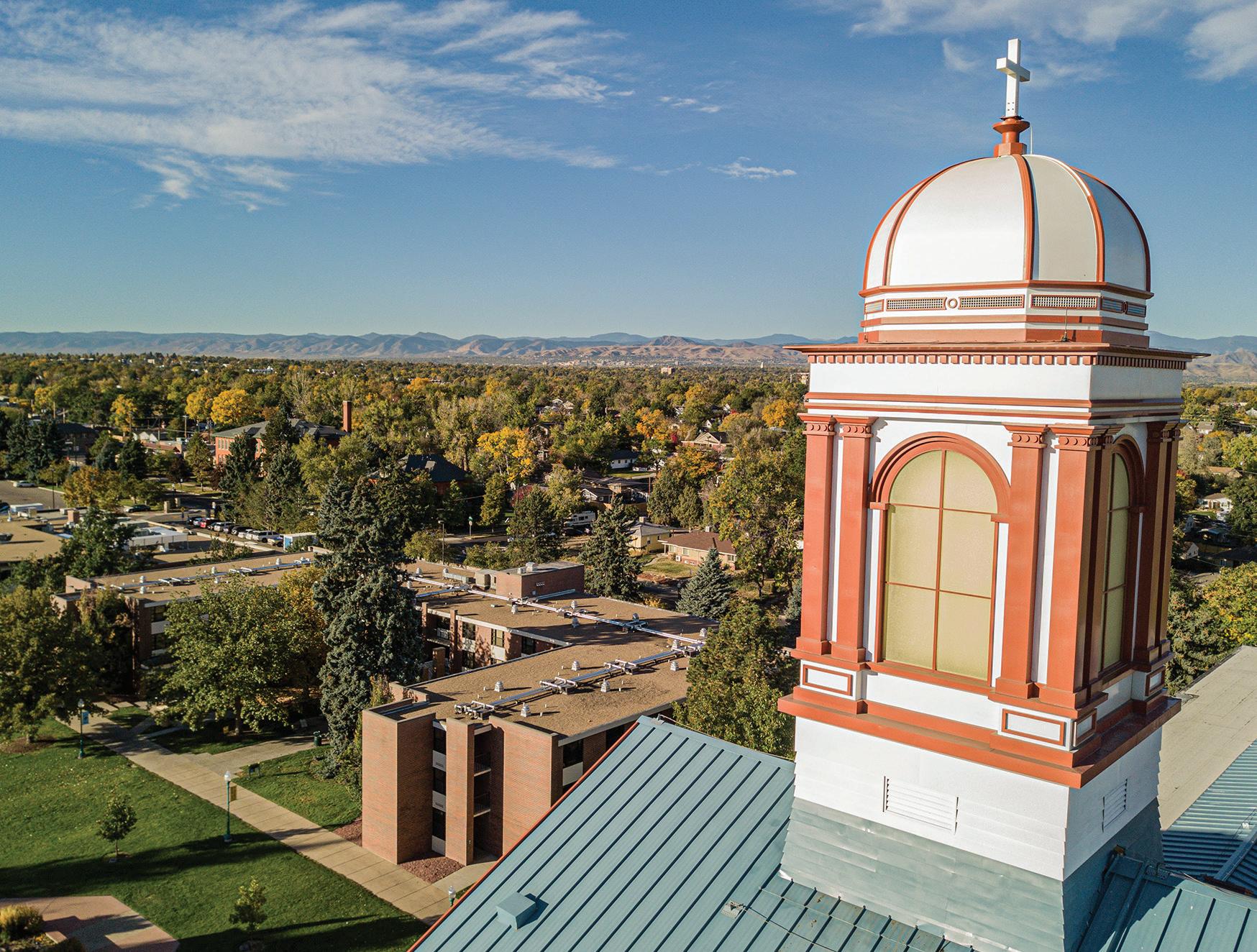
The President has put in place a more streamlined approach to building the University’s budget and developing its multi-year financial plan. The University Budget Committee (“UBC”) is advisory to the President and reflects a commitment to a shared role in institutional governance. Guiding principles that define the committee structure include a meaningful level of faculty participation.
Regis University’s committee has 12 voting members. The committee’s charge is to develop and recommend a budget and multi-year financial plan to the President through his Cabinet. The committee is composed of the following members:
• Six Academic Affairs representatives of up to four faculty. One of the faculty member representatives is appointed to the Board’s Resource Planning Committee. Each Academic Affairs appointment is for a twoyear term. Members may be reappointed for another term.
• Six staff members. With the exception of the CFO and Provost, each staff appointment is for a two-year term. Members may be reappointed for another term.
Tuition and fee recommendations are submitted to the President through the Cabinet for review and approval. The multi-year financial plan, including the one-year budget, is developed and submitted to the President through the Cabinet for review and approval.
For the Academic Year 2020-2021
Salvador D. Aceves
Senior Vice President & CFO
Financial Affairs
Patsy Cullen
Assistant Dean of Graduate Programs
School of Nursing
Ashley Fricks-Gleason
Associate Professor, Neuroscience
Regis College
Janet Houser
Provost
Kari Kloos
Assistant Vice President, Mission and Director of the Institute on the Common Good
Roberta Mancuso
Professor, Social Sciences CCLS
Stephanie Morris
Associate Vice President, Financial Affairs
Jerry Perez Director, Infrastructure, Operations and Security, Information Technology Services
Samit Shah Dean, School of Pharmacy Rueckert-Hartman College for Health Professions
David Spafford
Assistant Vice President and Director of Athletics
Robert Spagnola
Associate Professor, Anderson College of Business and Computing
Barbara Wilcots Vice President, Student Affairs
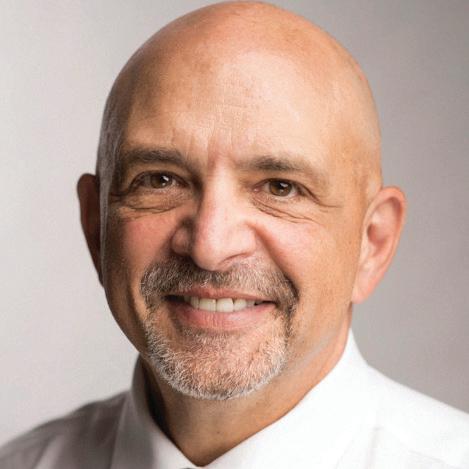
Robert “Bob” Spagnola, J.D.; Ph.D.
Program Director, MSOL & Associate Professor
Anderson College of Business and Computing
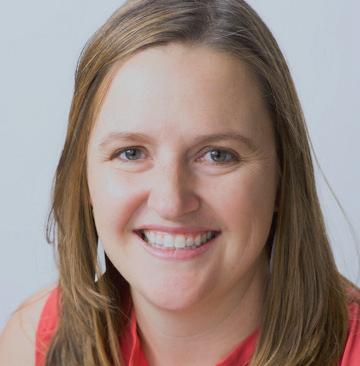
Ashley N. Fricks-Gleason, Ph.D.
Associate Professor Dept. of Psychology & Neuroscience
The University Budget Committee is responsible for oversight of the annual budget preparation process. Its work focuses upon formation of balanced and achievable University operating and capital budget proposals, which are then presented for endorsement by the President and the Board of Trustees. The Budget Committee meetings involve a rigorous discussion of new revenue generation, rightsizing, and priority balancing for the University. The expectation is that these discussions will allow the University to chart a path forward from the lows of the pandemic to a sustainable path of future growth. The Committee focuses on and makes recommendations for revenue drivers (tuition, required fees, and room and board rates) and capital priorities. Revenue expectations and goals are discussed at each meeting in the context of the resource allocations necessary to support these goals. The planning horizon for revenue is three years, and presentations in each of the major revenue areas of the University are accompanied by plans to drive revenue growth. My experiences as a faculty member on the UBC have taught me that our collective efforts which, I believe, have yielded a great outcome for the University could only have been possible through the commitment of time and effort of my Committee colleagues and leaders who have worked tirelessly to support the Regis community, and the mission and values of the University.
In my role as a faculty representative on the University Budget Committee (UBC), I have the privilege and opportunity to interact with phenomenal, dedicated colleagues from across the University. As I wrap up my first year of service on the UBC, I am struck by how much I have learned, how welcome I have felt, and how richly the work of the committee is infused with Jesuit principles. While I was honored to be nominated for service on this committee, I was initially nervous about how my voice and opinions, as a faculty member in the sciences, would be received – after all, I’m no accountant. What I have discovered is that the strength of this committee is derived from the diversity of its membership; individuals, each with their own experiences and priorities, gathering to work towards the common goal of ensuring a strong financial future for the University. Through this work, I have gained a deeper, more nuanced understanding of not only the budgeting process, but also the daily workings of other units on campus – information I am excited to be able to share with my Regis colleagues. Without question, the work is challenging, but I remain grateful for the opportunity to tackle these hard decisions with colleagues who believe deeply in the work we do at Regis and who bring thoughtful discernment to the (virtual) table each time we meet.
Flexibility, adaptability, and resilience are essential qualities that I firmly believe describe our campus community’s character. As we continue to battle the pandemic, these traits inspire hope and optimism. It is essential to acknowledge the progress made over the past several years and see how the structural changes made are now an ongoing part of Regis’ overall financial architecture. Most recently, resetting the enrollment goals to better reflect market demand, funding a $2.5M compensation and benefits pool, and establishing a $5.7M budget contingency to serve as a first-line defense for unforeseen changes in either revenue or expenses, have all helped mitigate much of the financial devastation from the cyberattack and COVID-19.
There is much work ahead. COVID-19 has created one of the most significant disruptions in history. In a good number of cases, institutions have done a heroic job in adapting to these challenging circumstances. The pandemic has not only revealed gaps in preparedness to deal with 100 percent online learning, but it has also forced us to rethink the way we work, provide support, and handle our day-to-day operational needs in serving each other. While we expect 2022 enrollments to rebound back to 2019 levels and move back to a growth trajectory over 3 to 5 years, at Regis, this growth will come from both new and expanding academic programs. As an example, for the upcoming fiscal year, we included $3M in
additional revenue from nine new and continuing pro forma initiatives. Complementing this growth is a plan to find new sources of revenue, offering variety in the mode of teaching, reduction in costs, and now, with COVID-19, building in redundancy.
It is time to invest. We need to continue investing in our people, our learning spaces, and our technology. We see good results from our new health benefits broker, who is helping us enhance our employee benefits with very modest cost increases, freeing up funding for increased compensation. We have improved our students’ living and recreational experience with the completion of the DeSmet Hall expansion and the Berce Athletic Center. As the technology industry moves to the Cloud, we have adapted to allow for new investments in technology. We are investing in the Next Generation Networks initiative to create a contemporary network that will support new classroom and lab upgrades. We will also upgrade our wireless network making Regis University a Wi-Fi 6 and 802.11ax campus.
However, in the end, it is essential to remember that, ultimately, our budget is the financial articulation of our mission: As a Jesuit Catholic university, Regis seeks to build a more just and humane world through transformative education at the frontiers of faith, reason, and culture.
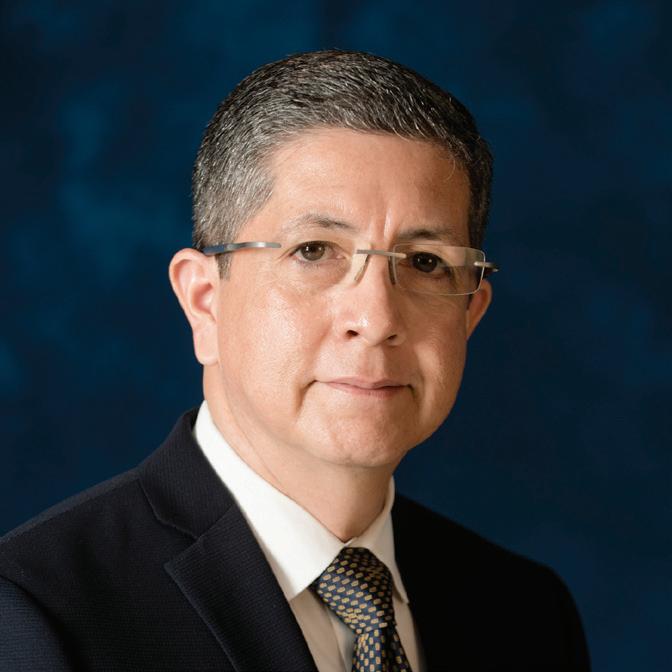

Salvador D. Aceves Senior Vice President and Chief Financial Officer, Professor of Accounting

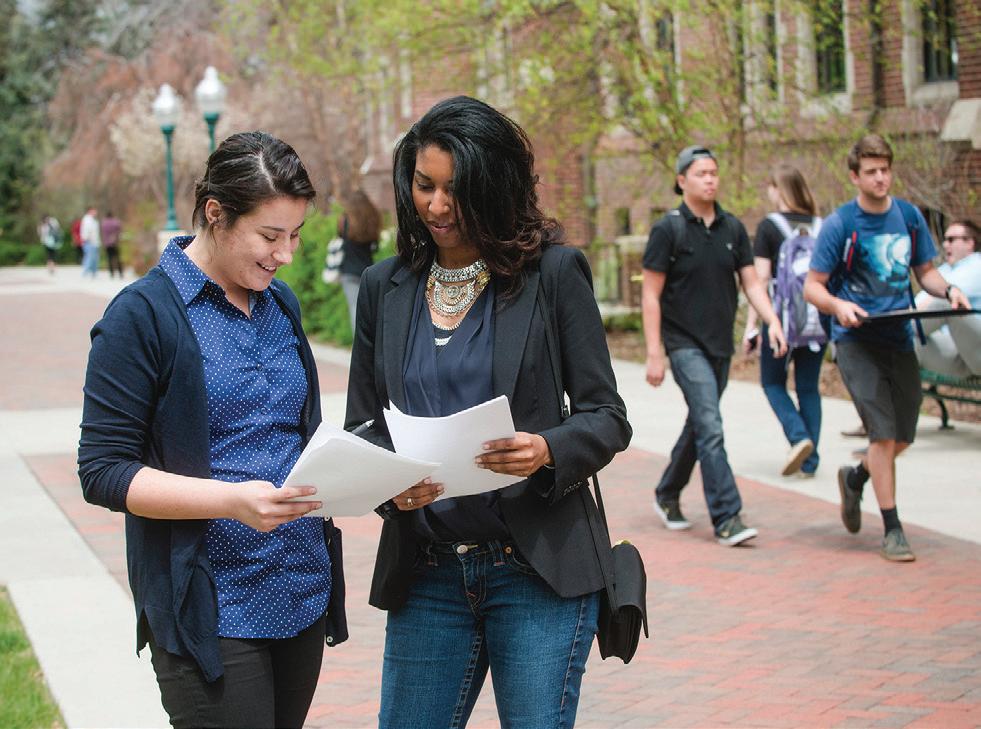
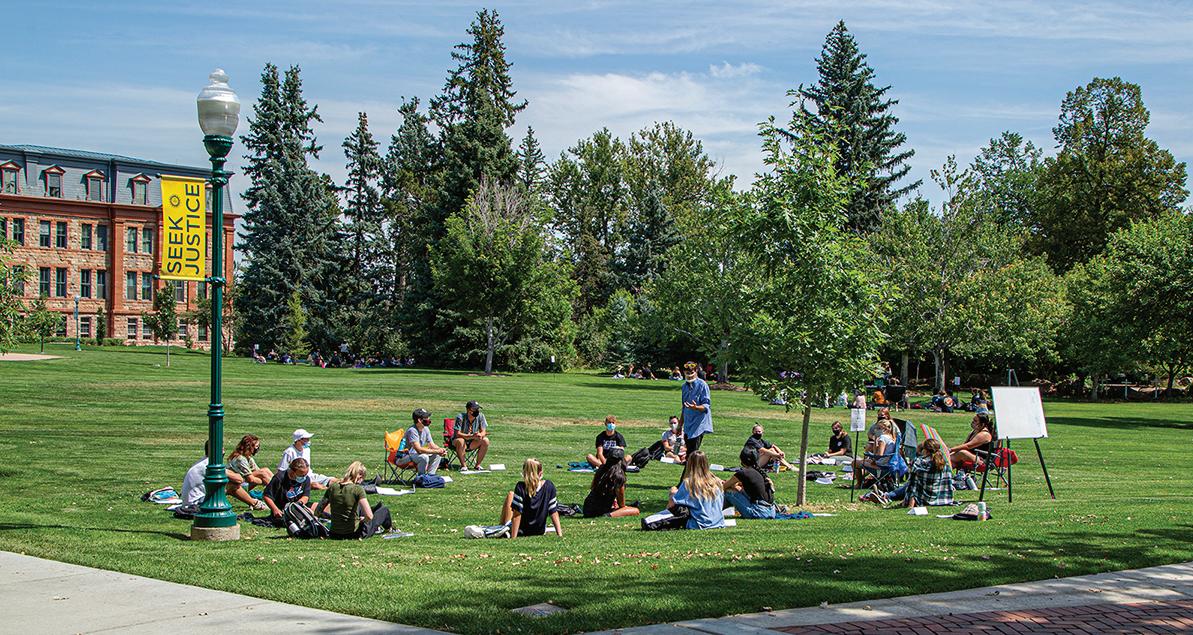
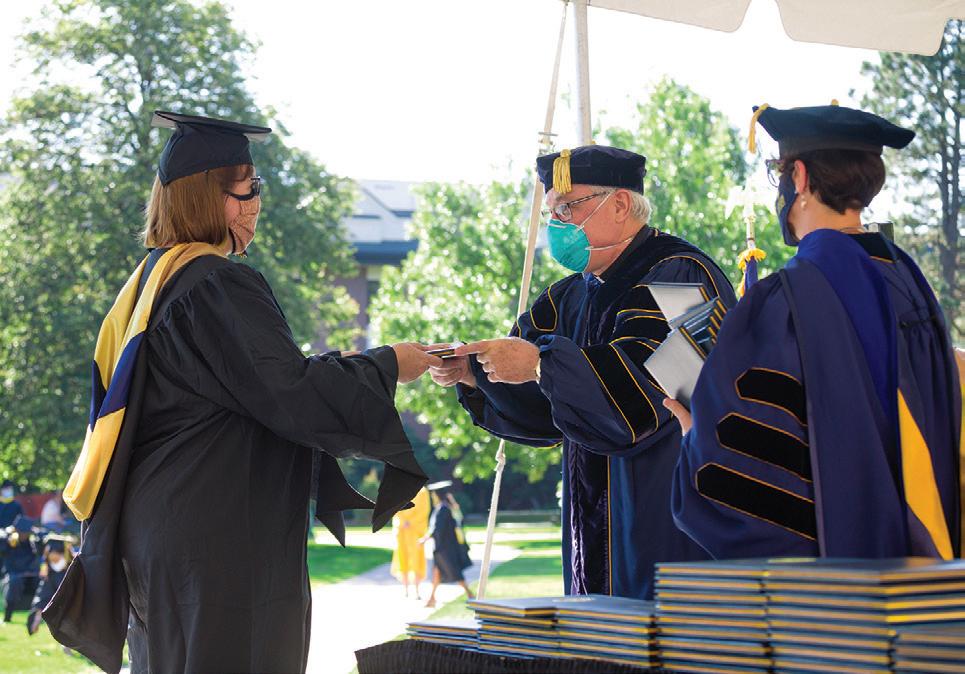
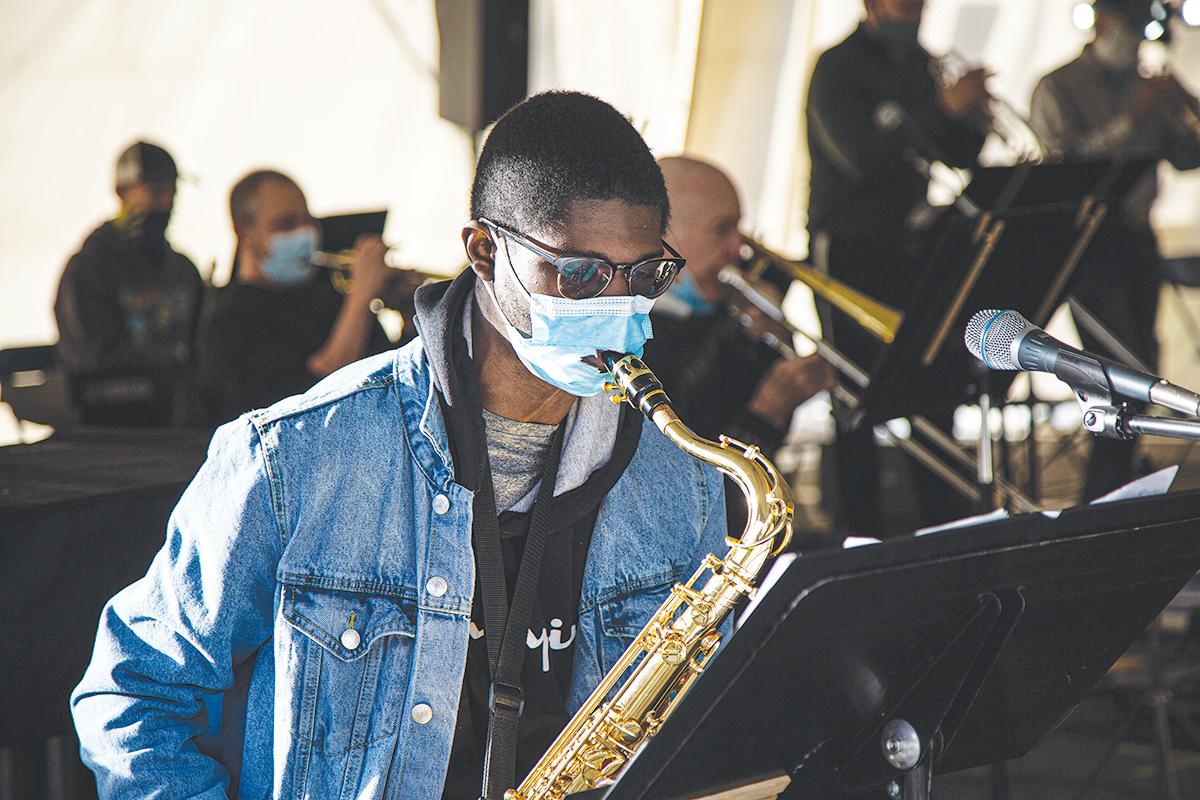
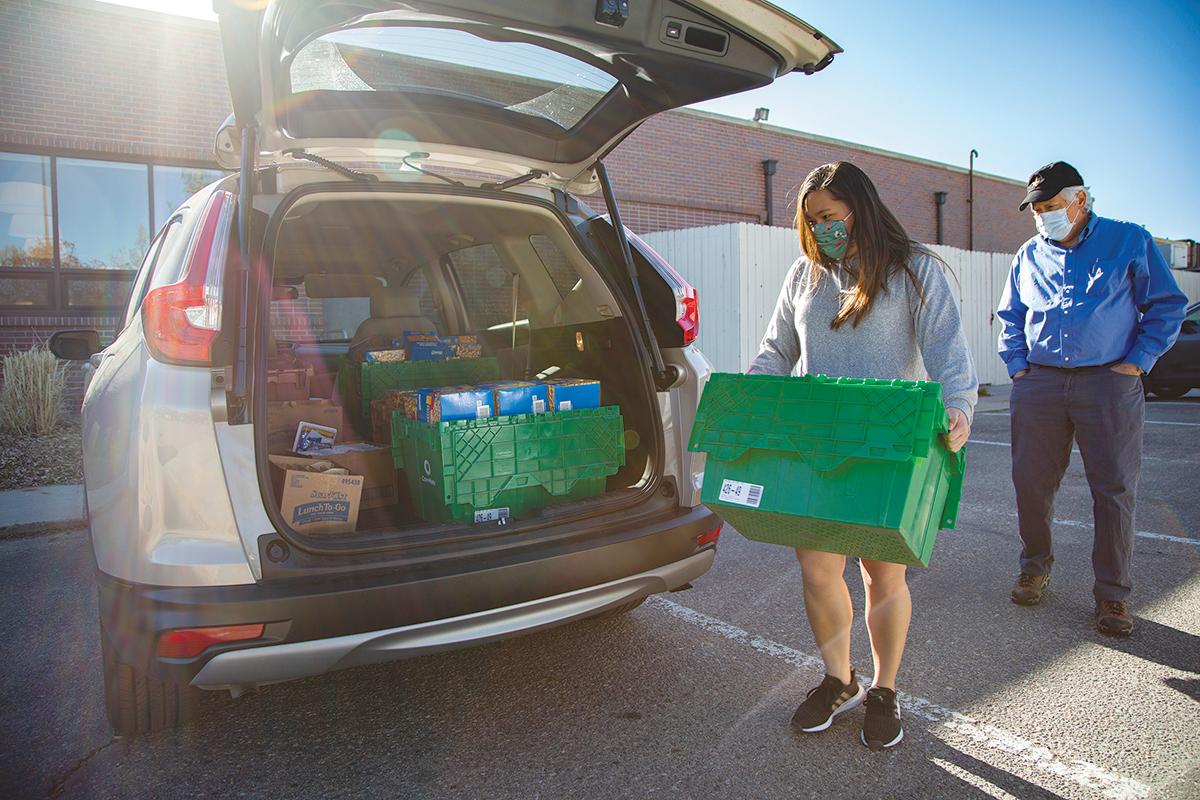
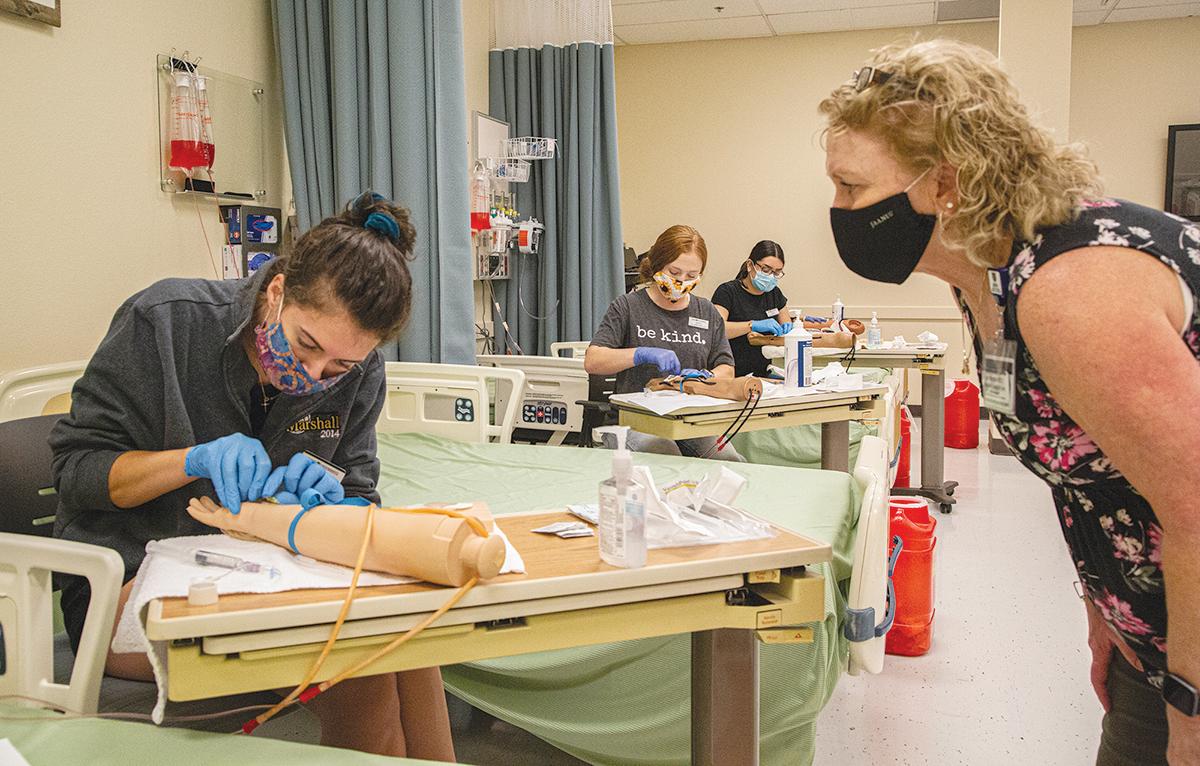
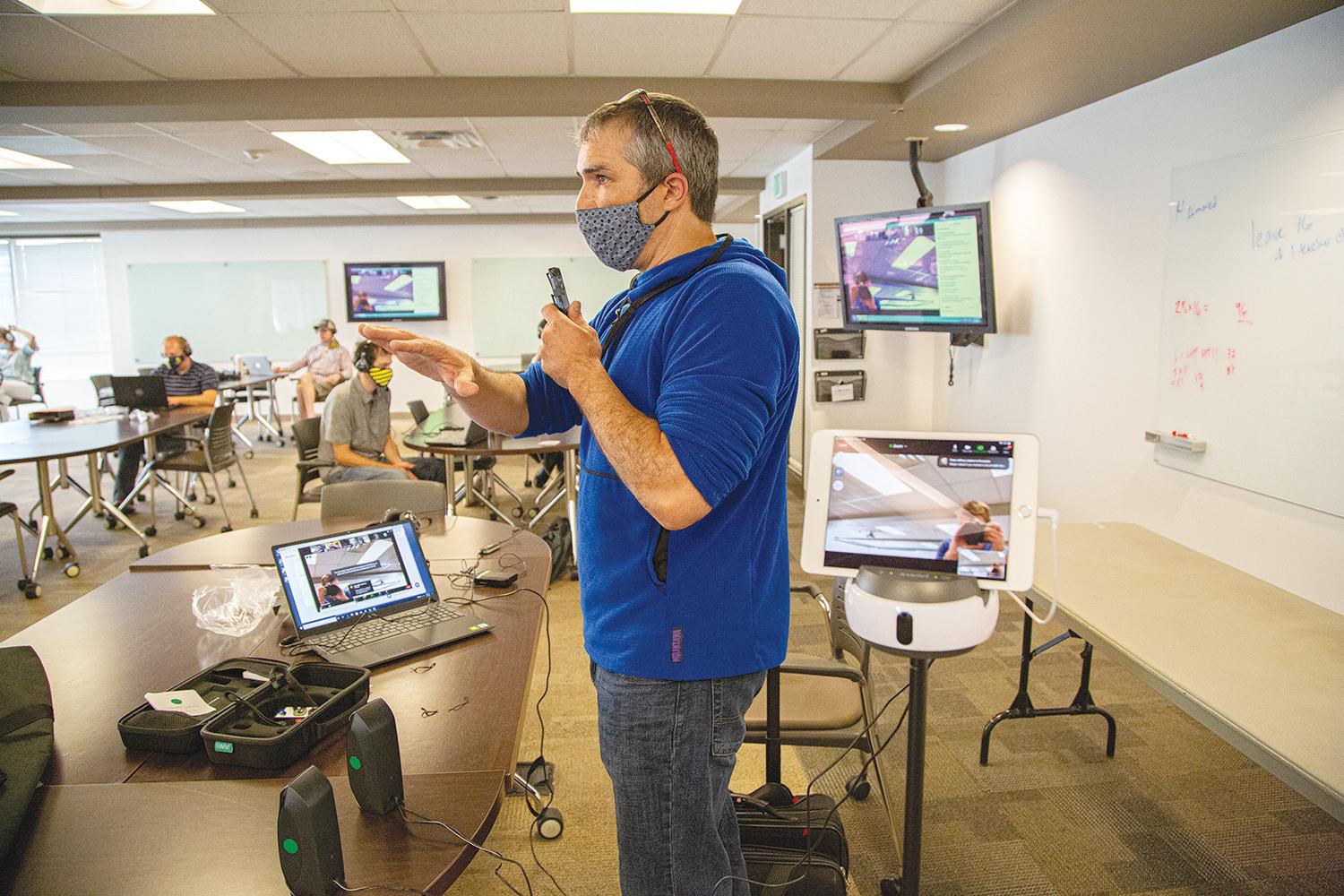
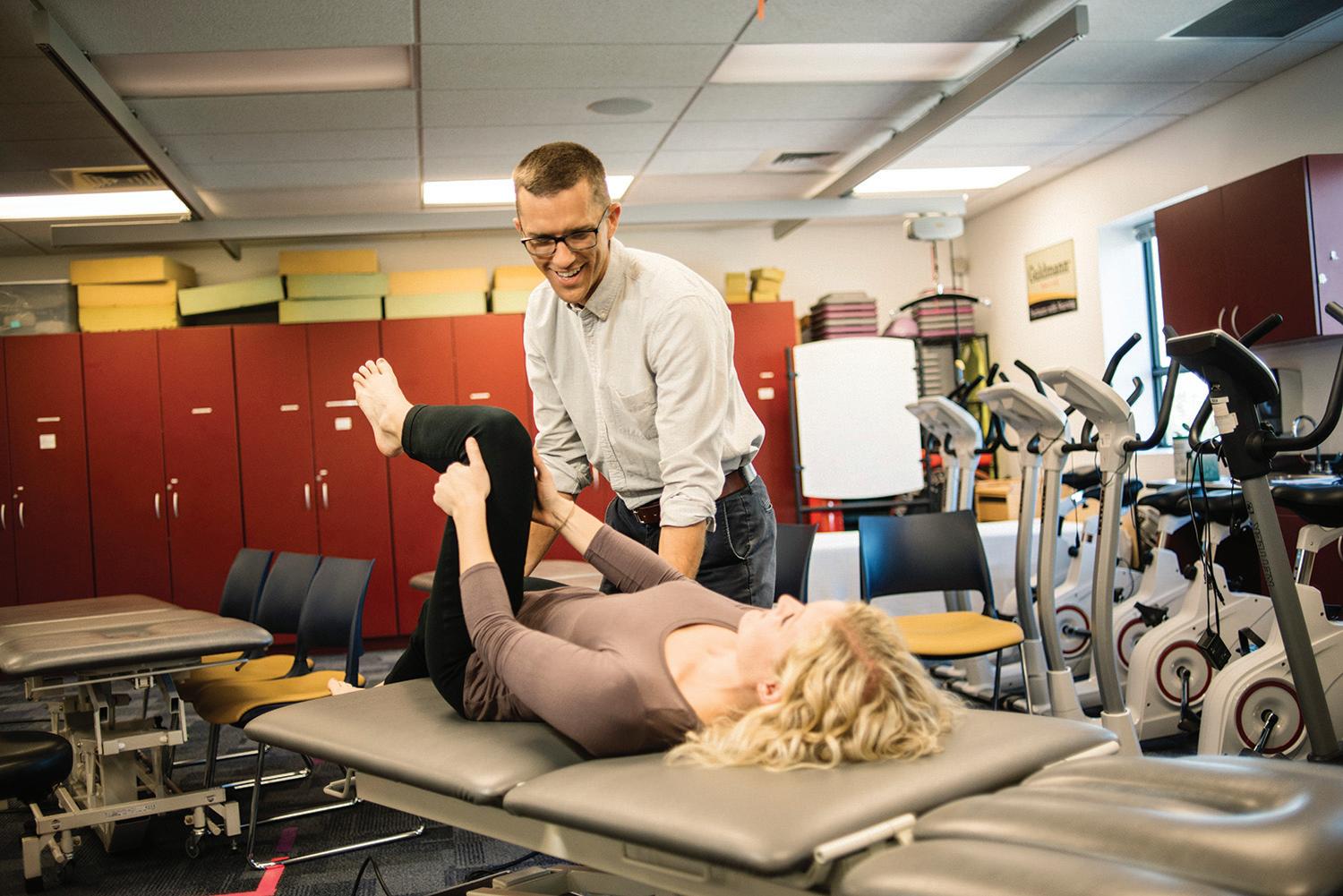
Fiscal year 2021 brought restructuring to enrollment management, aligning the offices of Admissions and Financial Aid under the direction of the Provost within Academic Affairs. This alignment positions the University to build on the recently introduced student success model by adding focus to key transition points in the student journey. It allows Regis to integrate the appropriate financial aid leveraging needed to recruit, retain, and graduate a talented and diverse learning community. Departments critical to academic success are united in a way that is different from the norm, bringing with it a unique opportunity to expand on the synergy between critical student services, such as financial aid, and academics to ensure access and completion are priorities.
As Regis returned to a new normal following the 2019 cyberattack, 2020 brought its own unwelcomed surprise in the global pandemic. Admissions was forced to quickly pivot to virtual events and visit opportunities with implementation of online programming such as Connect & Learn events, where faculty highlighted program outcomes; professional development webinars, where Admissions partnered with the Center for Career and Professional Development to help prospective students update their LinkedIn accounts and develop professional networks; 60-Second Lectures, which featured faculty spotlights; and Conversations in Care, where we offered faculty-presented topics to help individuals cope and manage in light of the pandemic.
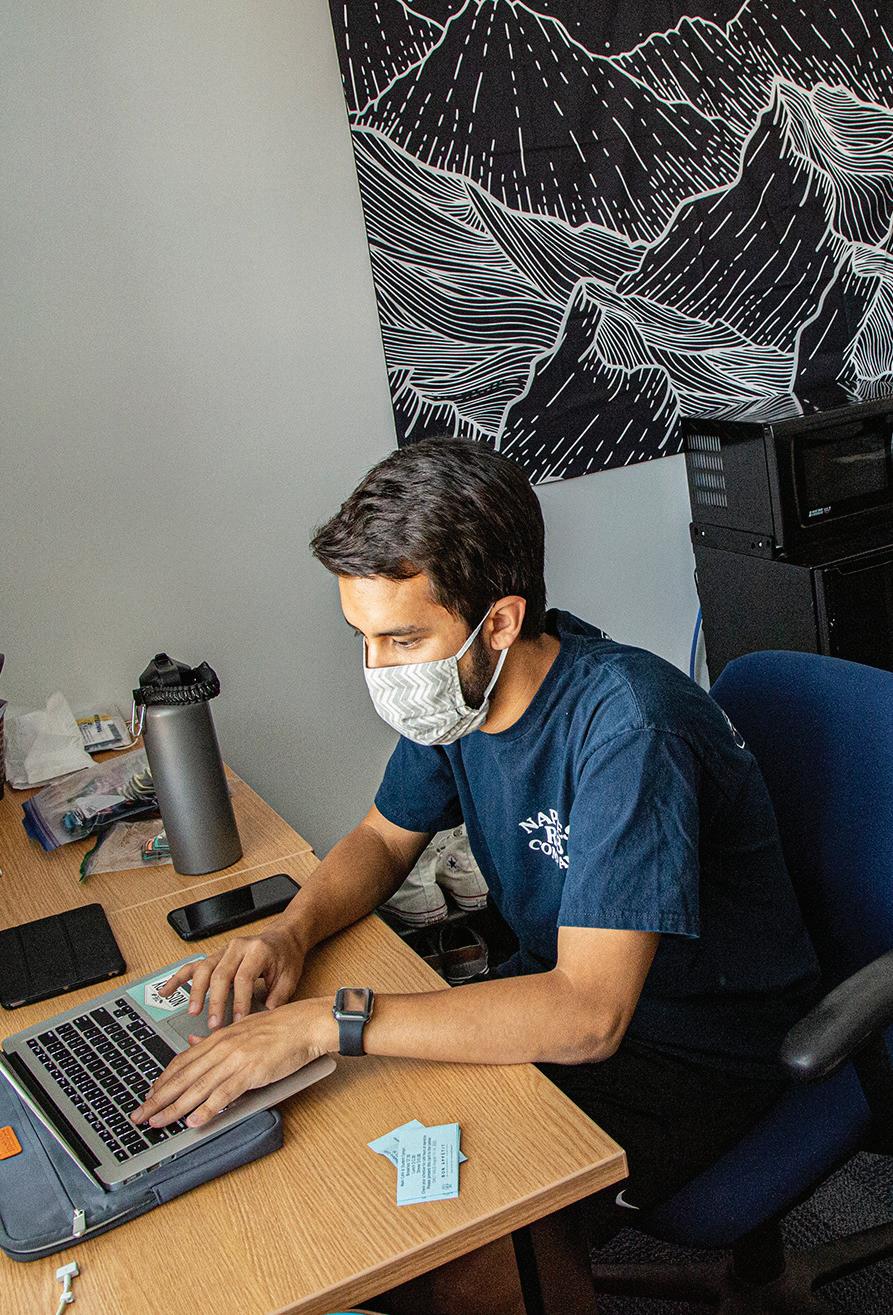
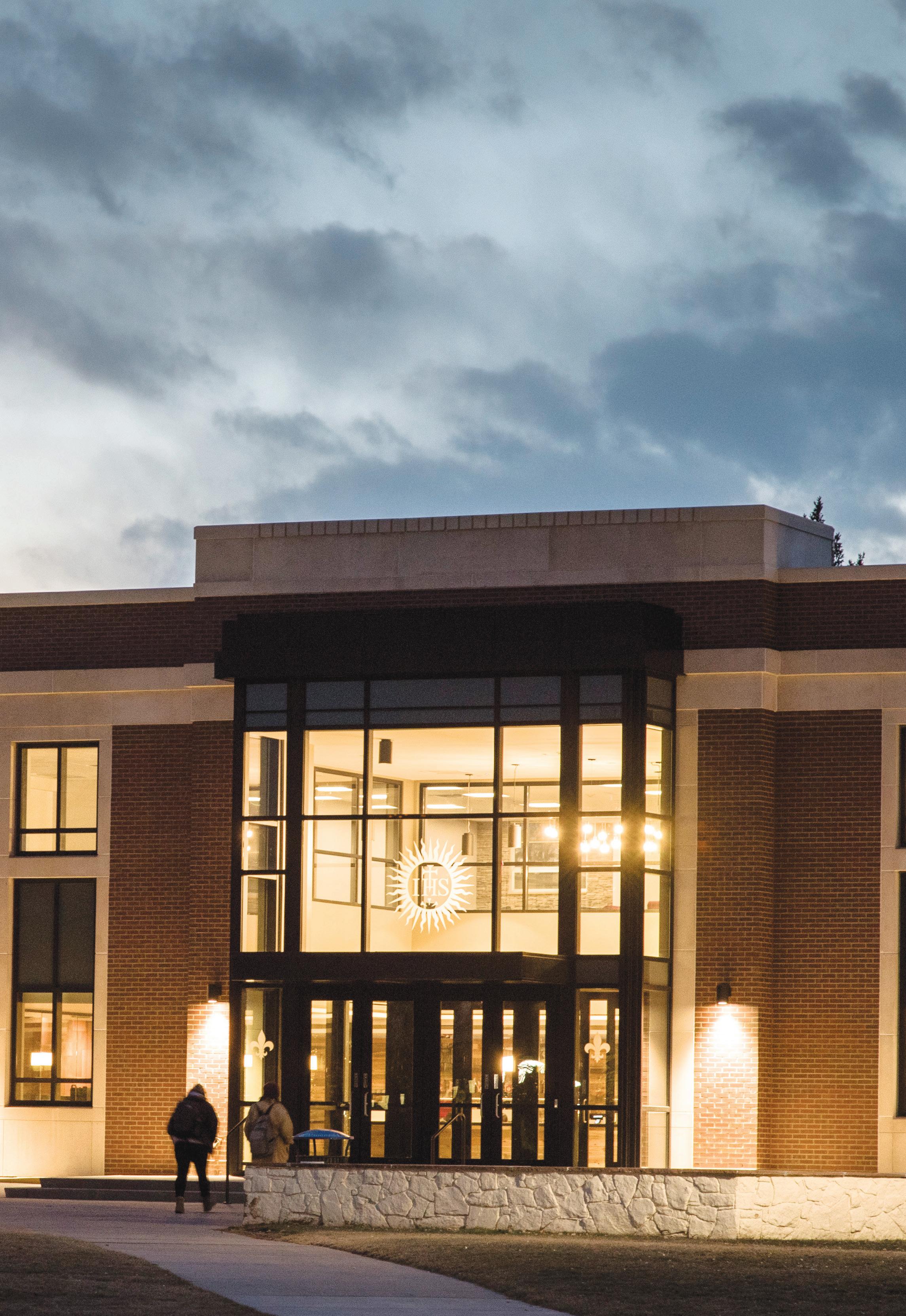
The Fall 2020 entering freshman class was a success, enrolling 481 students on an overall goal of 485 – with a 5 percent increase in first-generation students. Students of color represented 53 percent of the entering student body. Colorado Free Application Day continued to bolster the applicant pool with a total of 1,699 applications submitted. This represents a 38 percent increase in applications year-over-year from this state-driven initiative. Targeted marketing initiatives were added to ensure this population received a robust response from Regis. We maximized on geofencing opportunities to expand on the promotion within our largest 20 feeder high schools in Colorado. Fall 2021 numbers are coming in favorably, with deposits up 48 percent compared to last year at this time.
Post-traditional undergraduate and graduate new student enrollment is slated to end the year at 96 percent to goal, enrolling 2,140 students on a goal of 2,261. New student enrollments in the business programs within Anderson College of Business & Computing have rebounded, ending the year at 95 percent to goal. Students continue to select Regis’ Rueckert-Hartman College for Health Professions as a top choice in health care education, with the college ending at 103 percent to revenue goal. In FY21, we introduced Project Monarch, a data-informed deep dive into enrollments with a core objective to return to consistent and predictable post-traditional new student growth.
OUR OBJECTIVE:
To return to consistent and predictable post-traditional new student growth.
• REVISIT past strategies, resource allocations, and focus areas
• DIG DEEPER into root causes to guide the path forward
• IDENTIFY the most effective prospective student origin sources
• UNDERSTAND the role of organic and non-organic leads and applicants
• VISUALIZE the effect of lead generation-focused enrollment marketing on Regis’ post-traditional prospective students pipeline
• UNCOVER whether or not our programs are positioned in a way that’s compelling to prospective students
• REVEAL operational opportunities to reduce stop-outs and increase post-traditional student success

Our competition and their corresponding ad spend is growing rapidly. While interest in computing and business-related terms has increased steadily into and throughout 2020, rising competition has forced the majority of keywords to increase dramatically in price. For context, the highest cost per click keywords in computing and business:
Online MBA: ~$94 per click
MS +in +data: ~$65 per click
Our non-organic leads (prospects) become applicants around 22 percent of the time, which is above the industry standard 15-20 percent conversion. This is a testament to the effective lead nurture strategy the Admissions team continuously refines.
Decisions and unexpected events impacted enrollment, impacting sequential performance. The trifecta of lingering pressures from the cyberattack in FY 2020 + the unpredictable socioeconomic impact resulting from COVID-19 in FY 2021 + ongoing budget constraints stretched further due to the spending ability of the competition aligned to weigh down post-traditional enrollment growth and progress.
Maximizing enrollment marketing efforts:
1. Effectively implement Salesforce CRM and migrate data to improve data effectiveness, cleanliness & confidence through effective data import and export management.
2. Prioritize the impact of the Regis website on driving post-traditional working professional enrollments and optimize through A/B testing, goal tracking, and SEO.
3. Focus internal resources around application nurture and lead nurture.
4. Reallocate enrollment marketing resources and Admissions Counselor time toward top origin sources driving 80% of applicant volume.
5. Maximize high-potential audiences across lower-competitive channels and saturate wider markets with program awarenessfocused messaging.
(Industry Standard 15-20%)
However, assuming CPLs between $500-$1,000, the prospect column shown here alone could cost ~$1.5M-$3.1M.
Actual CPL examples 2020:
6. Inject energy, inspiration, and positivity into strategies & execution (externally & internally). Simplify documentation and visualize strategies to ensure they’re memorable and actionable.
Stealth applicants and organic website leads are Regis’ most important audiences to protect and grow, establishing the sheer importance of the Regis brand, reputation and regis.edu website in driving post-traditional enrollments. The most important priority is to ensure the regis.edu experience guides the working professional audience toward application, serving as a nurturing tour guide throughout their journey to enrollment.
Empower admissions counselors to proactively reach out to stop-outs in priority order and combine with retargeting paid media campaigns. This will be done while building out campaigns and engaging content on Regis.edu.
Approach definable market segments that contain potential adult learners. For example, Defense Contractors represent a significant population of adults in Colorado and are a much more encompassing population than strictly the military audience. Colorado Springs is the No. 4 city for defense jobs in the U.S. and No. 2 city for veterans.
The goal is to empower students to become employees of the future by providing the foundation to career advancement and personal fulfillment.
Each program track offers a variety of technical skills and soft skills. Prospective students will be reached through digital marketing efforts as well as organic social media, email and in the Regis alumni magazine.
The concept of a “lifelong learner” and certificate-based knowledge are both fast growing.
Increase the awareness of Regis’ educational benefits and facilitate better communication between employees and HR departments. Improve findability and on-site content surrounding partnership, establish clear expectations, roles and outreach strategy, and align this strategy with specific marketing and targeting campaigns.
Build out an area on the website to generate alumni engagement and encourage them to re-engage with the Regis community. They can reskill for their future, reignite their career and rediscover their passion for learning at Regis.
Apply insights from the health care industry to bridge communication gaps and ensure student success. Ensure the effort, time, and depth we put into nurturing each student is properly handed-off when transitioning to new hands.
of 3/29/21)

Post-Traditional New Student Enrollment
As college costs rise, financial aid for students is a growing necessity. It provides access to a Jesuit education and paves the way for a college degree for some who might not be able to otherwise afford it. Regis University strives to make higher education accessible and affordable to students from all socioeconomic backgrounds, awarding merit and need-based aid to students. A portion of the financial aid program is designed to recognize students for outstanding academic performance through special talent scholarships funded via the institutional budget and the endowment.
Financial Aid is any grant or scholarship, loan or paid employment offered to help a student meet his/her college expenses. Students desiring need-based financial aid must apply using the electronic Free Application for Federal Student Aid (FAFSA). This process determines the Estimated Family Contribution (EFC) that, in addition to the Cost of Attendance (COA), is used to determine the student’s need. Cost of attendance includes tuition, required fees, room and board, books, personal expenses and transportation. The formula for determining need is:
COA – EFC = Need
Based on the calculated need and the student’s high school academic achievements (for traditional students), a financial aid award package is developed that may include scholarships, grants, loans and student employment funded through federal or state work-study. A student may accept all, a portion, or none of the loans offered and work-study offers may not be earned in full or at all based on the student’s ability to find employment or his/her desired schedule.
There are four types of student aid:
Loans: These funds must re-paid either by the student or the parent, or may be forgiven in certain circumstances. Interest on loans is paid by the federal government (subsidized) for our students with the greatest need until the student graduates (or drops below half-time). Examples of loans include Federal Subsidized and Unsubsidized Direct Loans, PLUS (for graduate students and/or parents of undergraduates), and alternative loans.
Gift: These are scholarships and grants that do not need to be paid back, but often have income or academic requirements. Grants may come from the federal or state government or Regis. Scholarships may come from the reallocation of Regis tuition (general funded), from annual or endowed fundraising efforts of Regis University Advancement, or from outside entities.
Work: Work-study employment may be funded by Federal or State funds, helping to defray the cost of personal expenses through select on and offcampus approved employment positions.
Benefits: Educational grants awarded to eligible Regis employees or their dependents include Regis’ Employment Tuition Benefit (ETB), Tuition Exchange, and AJCU’s Faculty and Staff Children Exchange Program (FACHEX).
There are five sources of aid:
Federal: This source covers many types of aid including grants, loans and work-study monies, and students must fill out the FAFSA to receive. Examples include the Federal Pell Grant, Federal Supplemental Educational Opportunity Grant (SEOG), Federal Subsidized and Unsubsidized Direct Loans, Federal Work-study, Federal TEACH Grant, among others.
State: This is allocated to Colorado residents who meet specific need-based eligibility requirements. This source includes Colorado State Grant, Colorado Work-Study, Colorado Graduate Grant, and the College Opportunity Fund (COF).
Institutional: Regis reallocates monies from the general fund to support merit and need-based scholarships, required matching funds to Federal financial aid awards, and educational benefits awarded to Regis employees, their dependents, and our AJCU colleagues.
University Advancement: Raises external funds for both endowed and annual scholarships.
Other: Scholarships that students bring with them from external organizations and foundations, and alternative loans are included in this category.
The composition of college students is changing in a way that there will be fewer students who have the ability to pay the increasing prices we are asking them to pay. As tuition pricing increases and family incomes remain relatively flat, the percentage of enrolled Regis students who fall into a financially-needy category has climbed from 63 percent in fall 2016 to a high of 71 percent in 2019. Most of these families have an
average parent income in the $80-90K range, with Regis asking them to pay $22,000 annually (one quarter of their total income).
Key takeaways from research completed by The Brookings Institute, Pew Research, College Board, and NCES include:
Median income for families who are in the lower four income bands has stayed relatively flat since 2000 (those making roughly $80,000 and less) while families in the top income quintile have seen almost all of the growth. Therefore, while average income has gone up, it is mostly driven by increases for top income earners who have increased their income 20 percent since 2000 (middle three income bands are up 4 percent and the lowest income band is slightly lower). This is true at Regis where the lower income bands have remained flat (.13 percent increase) in the last five years while the average parent income in the top income group has grown 24 percent.
The highest income families have the highest collegegoing rates (78 percent of children from families in the top quintile pursued a bachelor’s degree compared to 32 percent in the lowest income quintiles).
In the Mountain Region, college-going projections are slated slightly up, however, demographic shifts are still in play, where students are more likely to be Latinx and first generation. For Regis, this represents good news, with the University experiencing an increase in Latinx and first-gen enrolled students.
In the most recent NACUBO Tuition Discounting Study, 366 private, nonprofit colleges and universities reported an estimated 52.6 percent average institutional tuition discount rate for first-time, full-time, first-year students in 2019-2020 and 47.6 percent for all undergraduates – both record high numbers. Regis has become increasingly reliant on tuition discounting strategies to expand access, with
discount rates running approximately 2 percent higher than NACUBO reported averages for each population.
With approximately $1.4M in annual scholarship support from University Advancement, we have much opportunity to lessen the reliance on internal sources of aid with a renewed commitment to fundraising and philanthropy.
The average published tuition and fees for full-time undergraduate students in 2020-2021 for private nonprofit four-year institutions is $37,650; Regis University’s published tuition + fee rate is $38,558 (excludes room and board).
Net tuition revenue has grown for Regis first-year students from $15,203 per student in FY 2017 to $17,185 in FY 2021.
Regis University prioritized the neediest of students in the first two Higher Education Emergency Relief Fund (HEERF) allocations, awarding a total of $1.2M via the CARES Act and approximately $1.4M of $1.7M via the HEROES Act to eligible students so far. Plans are in development to identify the best approach to maximizing the funding which will come as part of the American Rescue Plan signed on March 10, 2021 – with a minimum of 50 percent required to fund emergency financial aid for students, much like the first two rounds of HEERF. These funds will be awarded to students in FY 2022.
Summary: Regis University is focused on strategic enrollment alignment – whereby an increasing level of commitment and coordination across financial offices, admissions, alumni affairs, and academic leadership is required to achieve institutional success. Regis recognizes the opportunity to leverage institutional financial aid to impact the profile of the student body with a focus on access, retention, and completion while managing net tuition revenue.
(apparent inconsistencies are explained by rounding)
FINANCIAL AID OVERVIEW FY 2020 (continued) (apparent inconsistencies are explained by rounding)
TRADITIONAL STUDENTS TYPES OF AID SCHOOL DISTRIBUTION ALL AID (loans, gifts, work,
FINANCIAL AID OVERVIEW FY 2020 (continued) (apparent inconsistencies are explained by rounding)
LOAN DISTRIBUTION % BY STUDENT TYPE
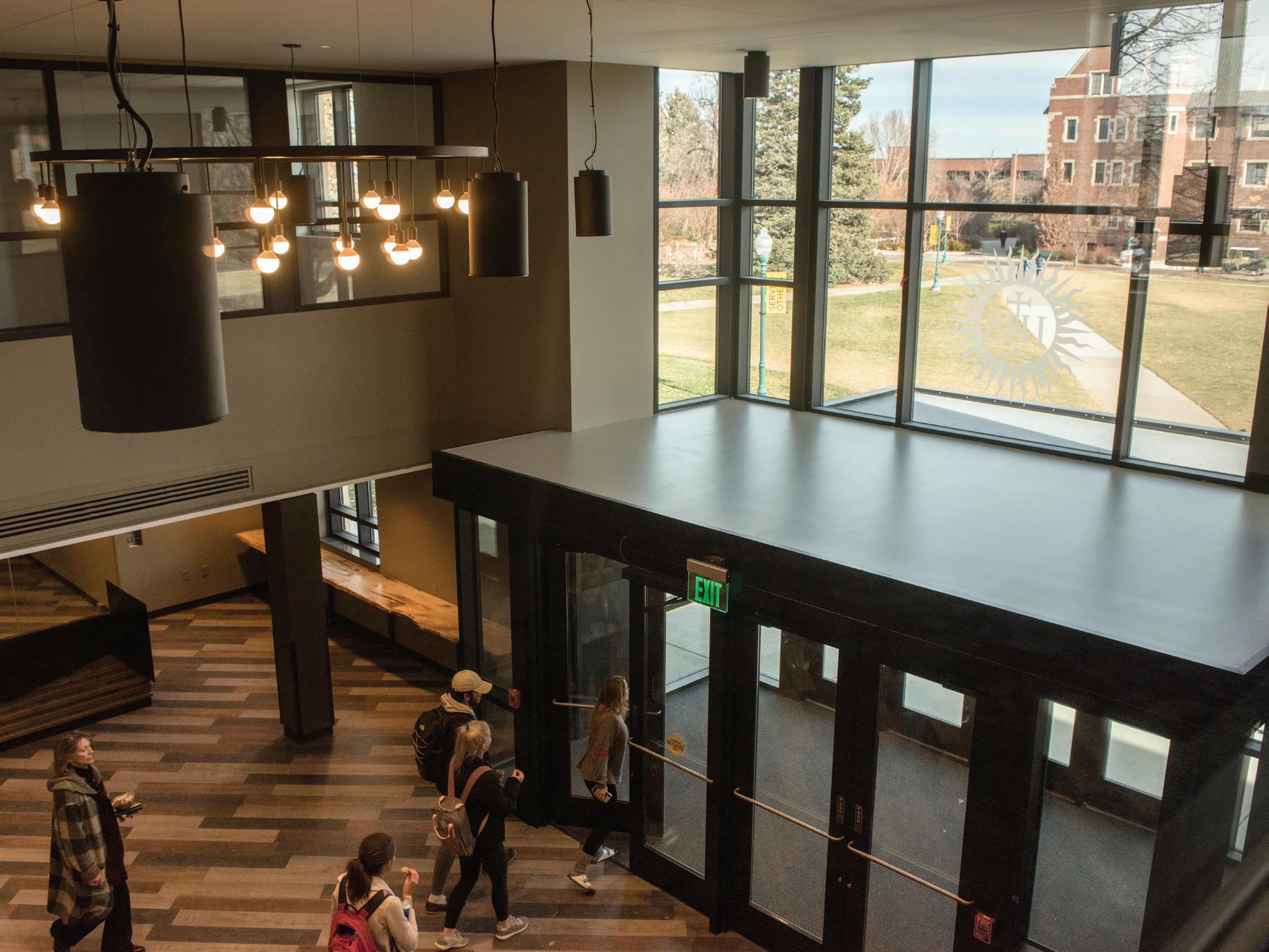


Working with the elements, not against them, can yield the most beautiful results.
As the educational market evolves and the impact of COVID is better understood, it has become clear that each of these challenges will impact our financial framework. Regis has viewed its all-inclusive price as one of its hallmarks. Within the last two to three years, admissions have seen a distinct trend toward students comparing tuition alone. In this scenario, we appear extremely expensive in a head-to-head comparison, as many universities add fees that do not appear in tuition costs retrievable online. The advantage a lack of fees brought to Regis has turned to a disadvantage in the current market environment. In response, Regis has adopted a new pricing framework that balances market trends, dynamic program pricing, and the introduction of new institutional fees.
The operating budget reflects three critical elements:
1. It fully funds the $2.5M Total Rewards compensation and benefits pool.
2. It fully funds a $5.7M contingency that serves as a front-line defense against any revenue gaps or unforeseen expenses.
3. It captures new program innovation and growth.
The pro forma process is the institution’s approach to developing a financial plan for both new academic programs and revisions to existing ones. There are nine pro formas embedded in total tuition revenue, demonstrating the strength of existing and new innovative curriculum changes.
Highlights of the FY 2022 institutional operating budget includes a reduction of $243k in net new tuition and fee revenue, $975k in new unrestricted contribution revenue, and $3.6M in other revenue. $3.7M is coming from the institutional portion of the American Rescue Act of 2021. Cabinet members submitted detailed budget requests totaling $6.8M. Through a series of meetings and discussions, new and repurposed budgets helped address a good portion of the requests.
In the following pages, you will read about specific strategies used in developing the academic affairs operating budget and how the Total Rewards initiative developed.
Higher education is a challenging industry, and the challenges for Regis have been even greater than those facing others. The pandemic was preceded by a cyberattack that left Regis already tested by fire. Yet we prevailed. Our tuition gap for 2020/2021 was only 5 percent, compared to the 20-25 percent tuition gaps of many of our colleague institutions. We narrowed the gap by using our student success coaches to retain adult students and focused on recruiting close to home, which flipped our ratio from 40 percent Denver-region new students to 60 percent. We offered a winter session that was wildly successful and kept students engaged over a lengthy winter break. Our financial planning for 2021/2022 in Academic Affairs and Admissions is based on early signs of a rebound in business programs, the opportunities for growth in Rueckert-Hartman College for Health Professions, and a strong early showing for the incoming first-year class of Regis College.
We are fortunate that our emphasis on student success began several years ago. Evidence suggests that institutions that are thriving are those focusing on student retention and completion. Our data showed that 2019/2020 student grades improved from the previous year, achieved after a cyberattack and followed by the COVID pandemic. The fall data showed that strong students continued to thrive under COVID restricted learning, but weaker students struggled with virtual learning. Serving students who are academically, financially, and emotionally needy was a major challenge for faculty and advisors already carrying a heavy load from adapting to virtual environments.
A tool that was purchased two years ago, the Navigate advising platform from the Education Advisory Board, has improved student communications, appointments, and advising by success coaches. This should enhance retention and student success even more as we implement additional modules for graduate students and predictive scores.
Five colleges reverted to three over the course of the year, reducing infrastructure costs as well as capitalizing on industry changes. The boundaries between business and technology have become increasingly blurred. This year, curricular changes were made to bring technology to the business student and vice versa. The integration of Anderson College of Business and the College of Computer and Information Science resulted in the launch of the Anderson College of Business and Computing, referred to in shorthand as the “Anderson College.” The College of Contemporary Liberal Studies became a School, renamed the School for Professional Advancement, and was relocated under the leadership of the Regis College Academic Dean. This positions the school well to provide generalized services to adult students and to plan future forays into professional continuing education.
All of these structural changes were completed this year and infrastructure was adjusted. The restructure resulted in the reduction of administrative positions and redundant support services. These cost savings will be permanent, and are incorporated into the Academic financial budget.
Student retention is heavily dependent upon faculty engagement. A quality project determining current online performance led to the development of “minimum use standards, “or the requirement for minimum use of the course shell in each class. The study also resulted in minimum standards for faculty to effectively engage students in virtual environments. Extensive training and the development of a database of best practices led to substantial improvement in the level of faculty engagement with online students. This is expected to have a financial impact through greater retention and the ability to differentiate our online programs from competitors.
With the alignment of Admissions and Academic Affairs, many financial aid improvements were identified. Thirteen tactical changes were made to reduce the financial aid spend, while the President took on leadership of a group charged with defining a philosophy of financial aid. This latter work is what will sustain a reasonable but effective financial aid awarding process.
In 2017/2018, the Regis University Academic Committee (“RUAC”), a faculty-led governance group for curriculum and program quality, conducted a sustainability assessment of current programming. The assessment resulted in the discontinuation of five degree programs and more than 20 certificates. The matrix included programs that should have intervention or closure; programs that should be sustained; programs that could grow; and programs that we could start.
Program closure must result in a two-year teach-out to meet Higher Learning Commission rules. These programs are in their last year in 2020/2021. It can be seen on the budget projection that we are expecting a little over $2M less tuition revenue, but it is balanced by the active growth pro formas that arose from the same process. A little more than $3M in new growth tuition revenue is expected to offset the costs of the program closure teach-outs. This year is the intersection of these planned program reductions and growth plans.
Note that this process was guided and implemented by faculty through the RUAC group. These faculties were intentional, thoughtful, and data-driven in their evaluation and recommendations, and are to be commended for the level of sophistication they brought to a difficult and controversial process.
The core services of our human resources team have been realigned to focus on talent strategy, which is intended to develop our employees, and total rewards, which is intended to recognize our employees. Our talent strategy includes recruitment, orientation, onboarding, learning and development, mentoring, career advancement, and performance management. Our total reward strategy recognizes our employees through our compensation, benefits, work-life effectiveness opportunities (to include workplace flexibility, paid leave and wellness initiatives), and finally, recognition programs.
The University is again planning a total rewards annual funding goal of $2.5M compensation and benefits pool for FY 2022. With well contained benefit costs for the coming fiscal year, the balance of these funds is available to address required compensation needs and provides the opportunity to recognize and compensate those employees whose positions and work remain vital to our mission.
In FY 2021, the previous total rewards allocation was primarily utilized to address other University needs due to the pandemic. In FY 2022, we look forward to the availability of these funds to allow the University to focus on required market and equity adjustments
as well as merit-based performance allocations. Additional compensation priorities include the development of a compensation philosophy, salary ranges, and job families, intended to create a comprehensive compensation program that fully aligns with our mission and better guides us in future compensation decisions.
In FY 2021, we identified a new benefits consultant to assist us in the re-evaluation of our health plans (medical, dental, vision and life and disability), to both be fiscally responsible and provide employees with offerings that assist in providing overall health and wellness initiatives that meet their varying needs. For the next plan year, we have adjusted our deductibles, out-of-pocket maximums and co-payments. The medical plans tiered premium structure based on three salary levels has also been revised to establish greater distinction between the levels and increased alignment between plan costs and premium allocations. This continued premium and tier approach is intended to recognize the rising cost of living in the Denver area as well as meet our mission and Jesuit value of cura personalis. We continue to offer generous leave choices, tuition benefits and a retirement plan, all of which provide our employees with a well-rounded benefits package.
Professional development continues to be an important component of our talent strategy and total rewards program. To this end, we have incorporated an initial training program for all new hires which also includes one-hour informational sessions with key University departments. We are also developing learning tracks on leadership and supervision for all employees. Additionally, our HR team has partnered with the Rueckert-Hartman College for Health Professions to create a pilot career progression program for our administrative staff positions, with plans to expand on a University-wide basis. We are creating a performance management program that encourages employees and supervisors to partner in identifying performance goals and development opportunities that will be assessed annually. Finally, this past year required us to offer alternative and new ways to work. We have used this experience to continue to consider the regular establishment of a work environment that is a balance of remote work and flexible work schedules, while always ensuring we are meeting our student needs and University initiatives, and enhancing the work and life balance of our employees.
This chart details amounts committed, allocated, and requested for Total Rewards.
$3.0M
$0M $.5M $1.0M $1.5M $2.0M $2.5M

THE FY 2021 AND FY 2022 OPERATING BUDGETS (as of 3/31/21)
Without skipping a beat, we have successfully adapted to a new way of life.
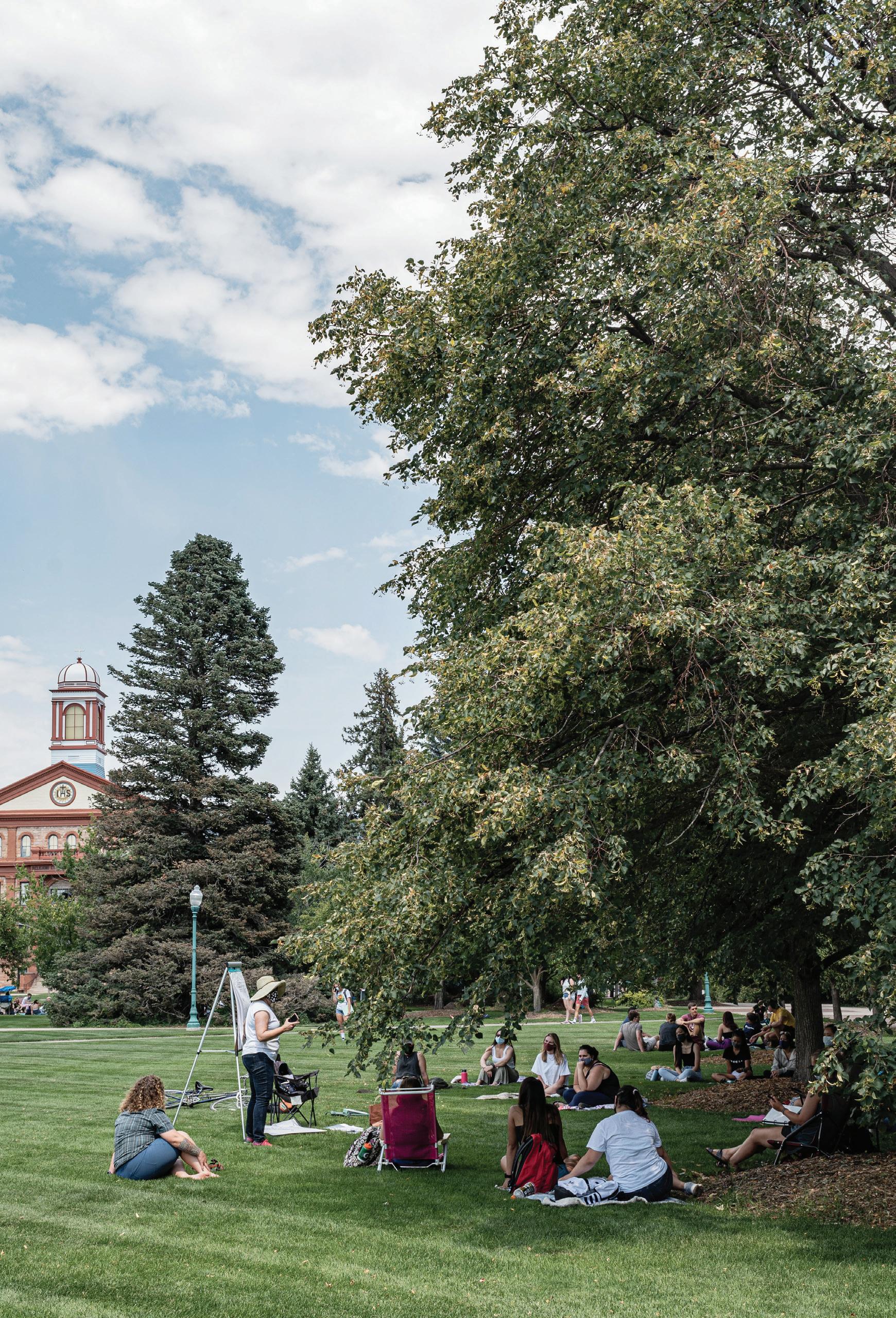
Regis University was founded in 1877, and its main campus is located in Denver, Colorado. The University offers a wide range of undergraduate and graduate degrees. The University’s primary source of revenue is student tuition and fees.
Operating activities include the delivery of education programs and the necessary support functions including unrestricted investment income. Non-operating activities include contributions not used in operations, realized and unrealized gain/loss on endowments in restricted assets, and other supplemental activities.
The University financial statements have been prepared on the accrual basis of accounting in accordance with accounting principles generally accepted in the United States of America for not-for-profit organizations.
FY 2019 AND FY 2020 ACTUAL AUDITED OPERATING RE SULTS
(in
thousands)

2017 BEST BUILDING PROJECT UNDER $10 MILLION
Golden Triangle Construction (GTC), Regis Main Hall
Phases 1 & 2 Renovation and Upgrade - Silver Award


ACE is an abbreviation for “Award for Construction Excellence.” The group is comprised of General Contractors who perform work in Colorado and the Rocky Mountain Region. They submit annual nominations for awards in approximately 12 categories. The nominations have strict criteria and are reviewed by selected representatives from the contractors at large. Winners are then awarded.
2019 BEST BUILDING PROJECT UNDER $10 MILLION
Golden Triangle Construction (GTC), Regis Student Center - Silver Award
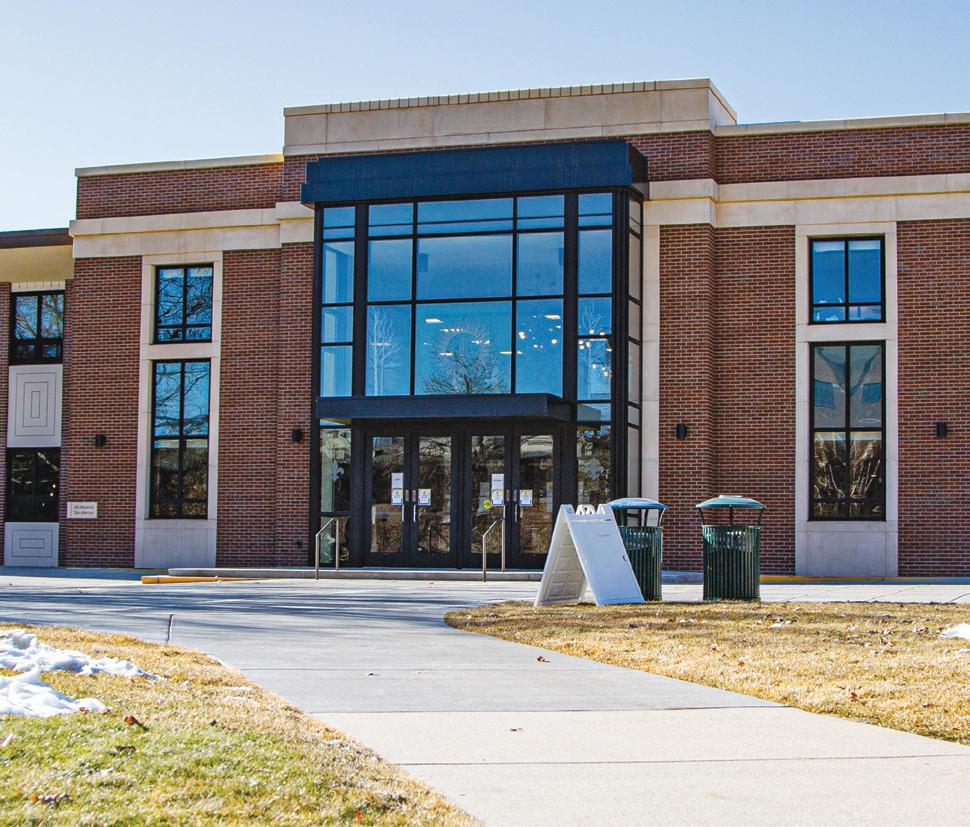

2020 MEETING A DIFFICULT CHALLENGE PROJECT BECK Builders, DeSmet Hall Dormitory Addition and Renovation - Bronze Award
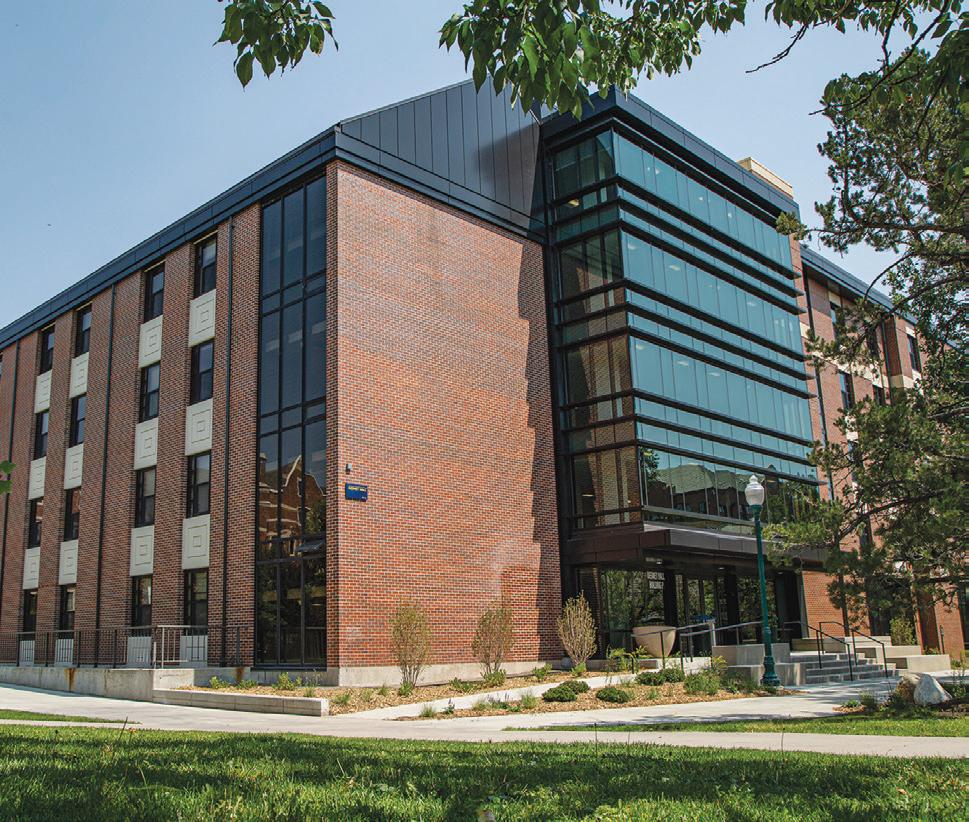

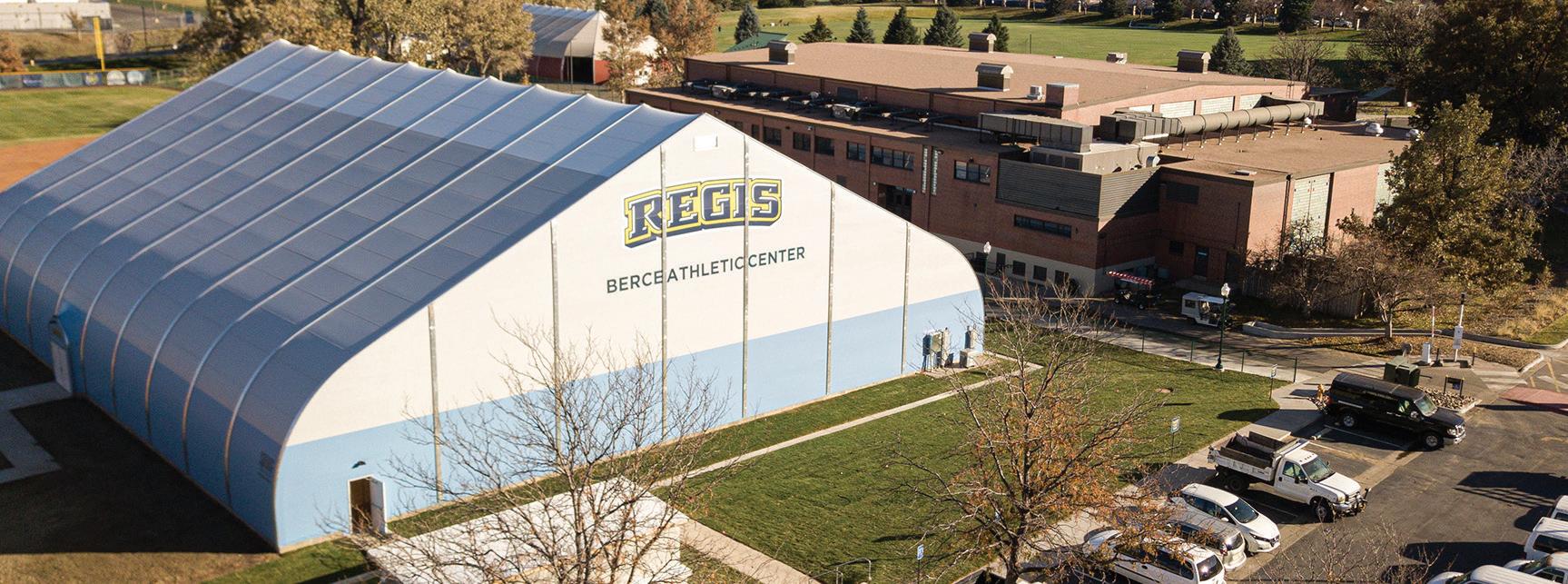



DEFERRED MAINTENANCE: $2.0M
TECHNOLOGY: $3.0+M
• Two-year Institutional Road Map
• Next Generation Networks
• Classroom and Lab Technology Upgrades
RESIDENCE LIFE: $60K
SIMULATION LAB: $1.2M
SOURCE: REGIS UNIVERSITY ANALYTICS AND REPORTING
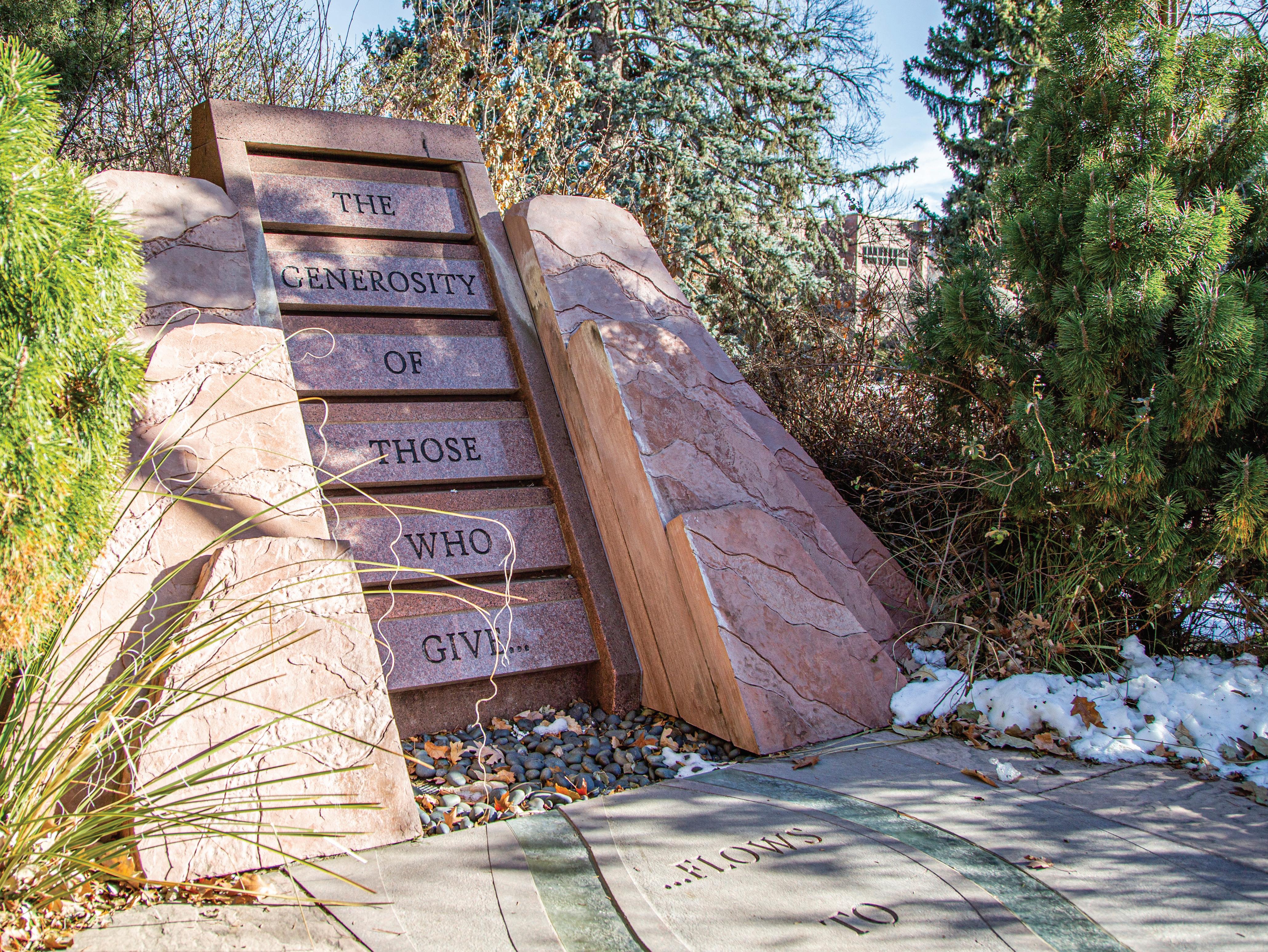
Philanthropy is a growing part of the total financial resources that support Regis University. In the past seven years, gifts from alumni, friends, corporations and foundations have totaled over $80M and have helped support student scholarships, faculty programs, and new capital projects including the Berce Athletic Center, the Lady of Loretto Grotto and an expansion of our Simulation Laboratory in Rueckert-Hartman College for Health Professions.
Since 2015, nearly 14,000 donors have made gifts to support the goals and priorities of Regis. While many make unrestricted gifts to support the institution, nearly 90 percent wish to support the University Colleges; Regis College, Rueckert-Hartman College for Health Professions and the Anderson College of Business and Computing, as well as University programs such as Athletics, the Porter-Billups Leadership Academy, general scholarships and much more.
All gifts, no matter the size, can make a difference in supporting our students and faculty. From small, annual contributions made over the phone or via social media, to special major gifts that endow scholarships or programs – or perhaps help to build a new capital project - every gift has an impact.
In these times, perhaps more than ever before, we are truly grateful for the generosity of those who give so that others can grow. Their gifts enable our students and our graduates to become the best version of themselves by becoming men and women in the service of others.
“Lord, teach me to be generous, to serve you as you deserve, to give and not count the cost.”
St. Ignatius of Loyola.”

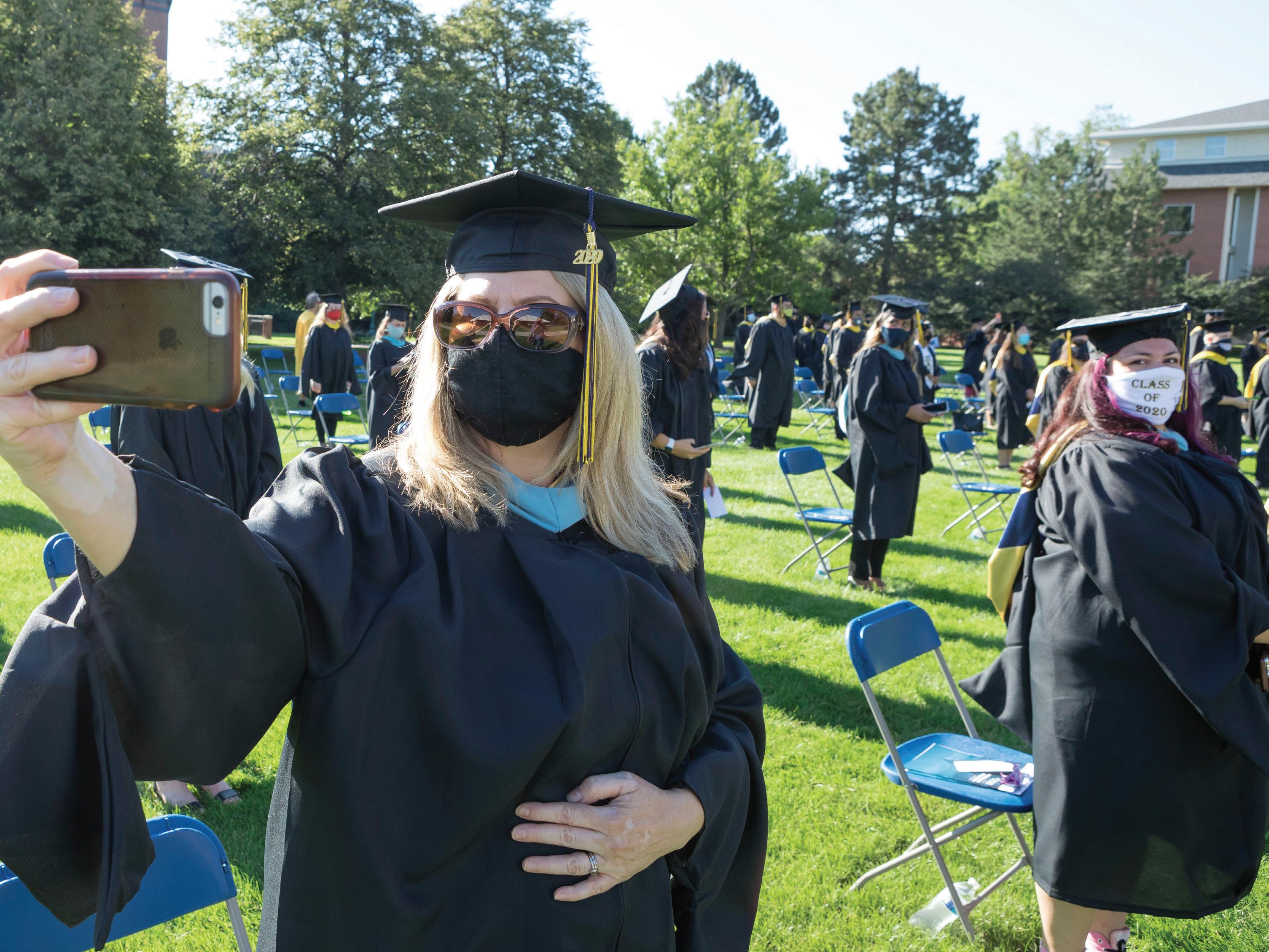
A GIFT TO BOTH THE ANNUAL FUND AND THE ENDOWMENT MATTERS BECAUSE OF REGIS’ COMMITMENT TO ATTRACT AND ENROLL TALENTED STUDENTS, REGARDLESS OF THEIR FINANCIAL CIRCUMSTANCES. THIS IS THE REGIS UNIVERSITY THAT OUR ALUMNI AND FRIENDS KNOW AND TREASURE.
The Regis portfolio has grown to $83.7 million as of December 31, 2020 with annualized returns of 12.5%, 7.4%, and 7.2% over the past 1-, 5-, and 10-year periods, respectively (net of investment management fees).
Over the last ten years, Regis has matched its benchmark and slightly trailed its median peer, in a peer group comprised of endowments and foundations with $50 to $250 million in assets.
Annual Endowment Return Performance - Ending Dec. 31, 2020
(apparent inconsistencies are explained by rounding)
Market Value History - 10 Years Ending Dec. 31, 2020

The greatest view follows the toughest climb.